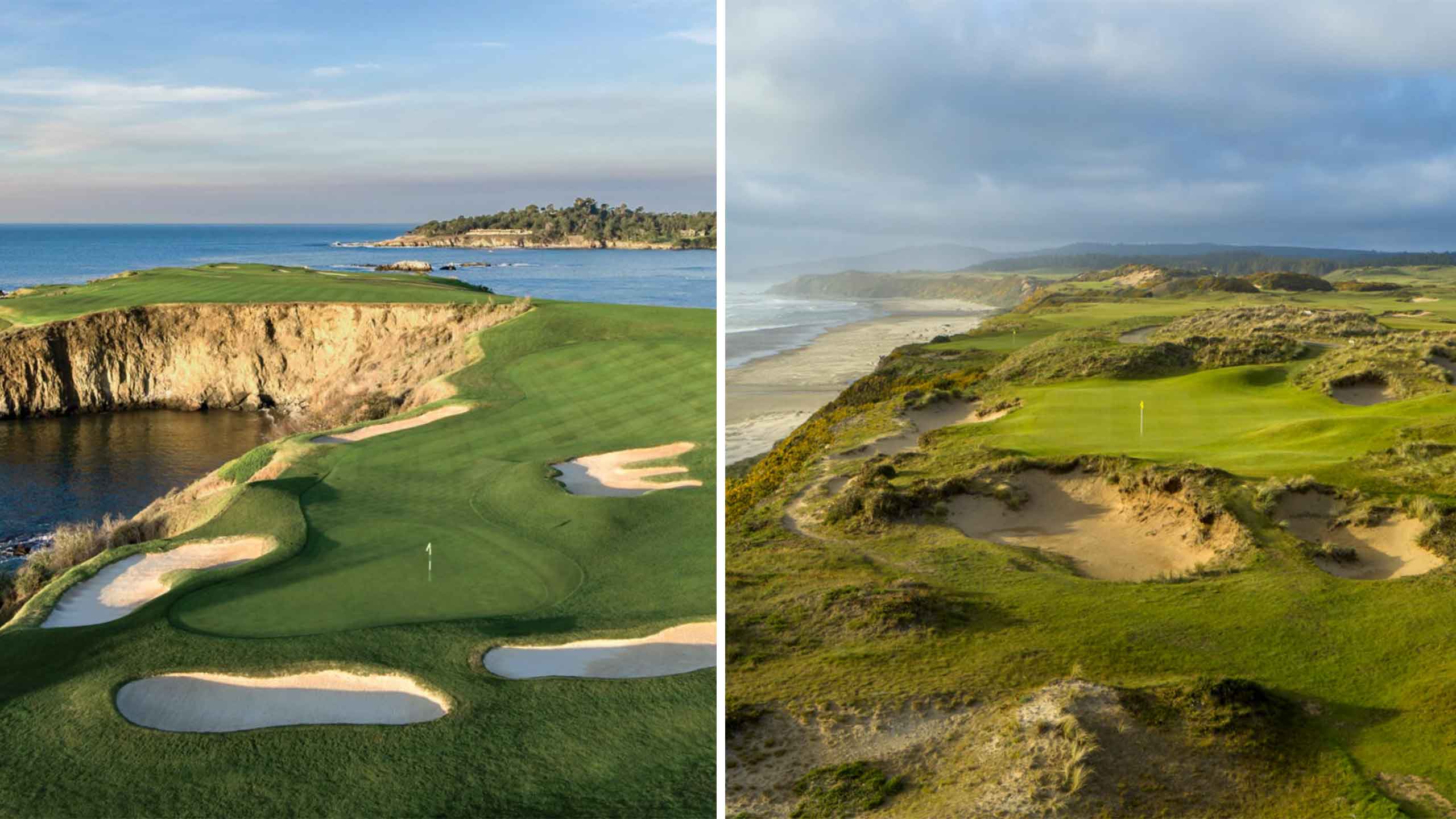What’s in a number?
GOLF’s new ranking of Top 100 Courses in the U.S. is exactly that: a list of the best courses in the country, arranged in numerical order, “1” being the best.
Sounds straightforward. Hard figures, hard facts. But as anyone who follows the rankings knows, while the roster itself is cut-and-dried, the thinking behind it is not. It reflects the views of our course raters. Keen-eyed and well-traveled, these folks know their stuff. But ultimately what they’re offering are their opinions. Which brings us back to the question at the top.
What’s in a number? Or, put more directly, what makes one course “better” than another that happens to sit lower in the rankings?
To provide a deeper understanding of the considerations behind the rankings, we’ll be asking our raters in the days ahead to take a side in a “which is better?” debate: a comparison of courses meant to shed light on how our panelists think about design. We’ll start with two prominent public-access courses, Pebble Beach Golf Links, in California, and Pacific Dunes, in Oregon, ranked 9th and 19th, respectively, on GOLF’s new Top 100 U.S. list.
Which is better? Read on.
Pebble Beach is better!
by Top 100 Course rater Tom Brown
The recent trend among golf architects is to speak in breezy tones about “natural golf” and then switch gears the next minute into reading topographic LIDAR survey data to explain the maximum potential of a site from the quality of the land’s humps and bumps on the map.
No high-tech readings are required at Pebble. The response it triggers is visceral, raw. When it comes to golf, the Monterey Peninsula is still the best nature on offer. The biggest difference-maker for a course that bills itself as the “greatest meeting of land and sea” is, in fact, proximity to the sea, nowhere more dramatically than on the 7th and 18th holes, where the meeting happens at grade. It just can’t be beat.
Pacific Dunes wins on grassing, green complex variety, bunkering, flow. But Pebble edges Pacific Dunes overall on the walk, the finishing hole and the seaside golf aesthetic. As for LIDAR data, who knows which site is better, but a lot of golf architects keep submitting plans to improve Pebble’s routing. Good luck with that.
As a final point to tip the scale, I’ll refer to Jack Nicklaus, who named Pebble’s 8th his favorite hole in golf.
Pacific Dunes is better!
by Top 100 Course rater Jeff Lewis
The more options there are for shots, the better the golf course. Links courses tend to have more greens on ground level that can be approached in various ways. They also tend to have more variety because wind shifts from hour to hour and day to day make them more interesting.
Pebble calls itself a “links” but it is really a parkland course by the sea. A great parkland course by the sea. But it is not a links. Pacific Dunes is part of Bandon Dunes Resort, which has achieved the truest representation of UK/Ireland links conditions in the United States. I would say that only Cabot Links in Nova Scotia is as true to the British Isles in its conditions.
The weather along the southern coast of Oregon is so similar to that of the UK that the greens staff, basically from the beginning, have been able to recreate the turf conditions found on classic links courses. That is critical. Just because you design a course with greens that allow multiple methods of approach doesn’t mean it will be possible if the course is just too darned soft. Too soft is really never the case in Oregon.
Obviously, Pacific Dunes is also gorgeous. Probably just as breathtaking as Pebble on any given day. But for me, it gets the nod because I will always take a links course and all that comes with it over a parkland course.
